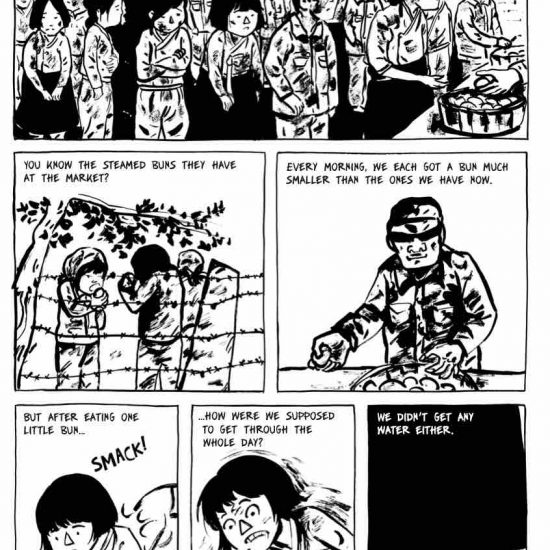

The caption tells us this is Kapsan County, South Hamgyong Province, 1937, in the calm before the storm-land that used to be Song Gwija’s home. Korea’s old myths revolve around its mountains, so the mountains can make one homesick. Populated with people, her drawings are like etchings-scratched, frenetic lines with pools of ink on the page-but this mountain scene is soft and empty of humans. Of all Gendry-Kim’s stories and images in this graphic novel, the most striking is the quiet view from a high, grassy lookout over cloud-swept mountains. The Waiting, which came out last week from Drawn & Quarterly, is an important follow-up. Gendry-Kim’s English-language debut, Grass(풀), which told the story of sex slavery (comfort women), won the Krause Essay Prize, the Cartoonist Studio Prize, the Harvey Award, and appeared on best-of-the-year lists from the New York Times, the Guardian, Library Journal, and more. Some hope against hope to be selected via a government lottery system for a meeting, however brief, with their family members. A generation of people well into their 80s and 90s who remember an undivided peninsula is dying out. An estimated 2 million civilians died during the war, and hundreds of thousands of Korean families remain divided. But the impossible promise to reunite her mother with her first son, Jina’s half brother, lost to the north, weighs heaviest.

Jina’s guilt over caring for her ailing mother, still stuck with a wartime mentality, is palpable. Gendry-Kim’s black-and-white hand drawings of aging Gwija-wrinkles, moles, unibrow, and forehead etched with deep affection-and her lonely life in an apartment in Seoul are poignant. Gendry-Kim’s The Waiting, translated from the Korean by Janet Hong, explores this ongoing division through the eyes of Jina, a writer, and Song Gwija, her mother. The Korean War (1950-1953), which began over 70 years ago, permanently sliced the peninsula into two nations, and the remaining families, separated by the 38 th parallel, still wait for a reunion with their loved ones. She had grown up in North Korea and had left behind family-an older sister in Pyongyang, who she desperately wanted to meet again. Her mother was staying with Gendry-Kim in Paris for two months after Gendry-Kim’s father passed away when she revealed a family secret.

Gendry-Kim was in her late 20s living in Paris, however, when she heard the story that grew into The Waiting(기다림), a moving and dramatic graphic novel of aging, war, family reunions, and separation. She lived there for 17 years before returning to South Korea.

Before she was an award-winning graphic novelist, Keum Suk Gendry-Kim was a painter, a sculptor, a bookbinder, and a translator between Korean and French, living in Paris.


 0 kommentar(er)
0 kommentar(er)
